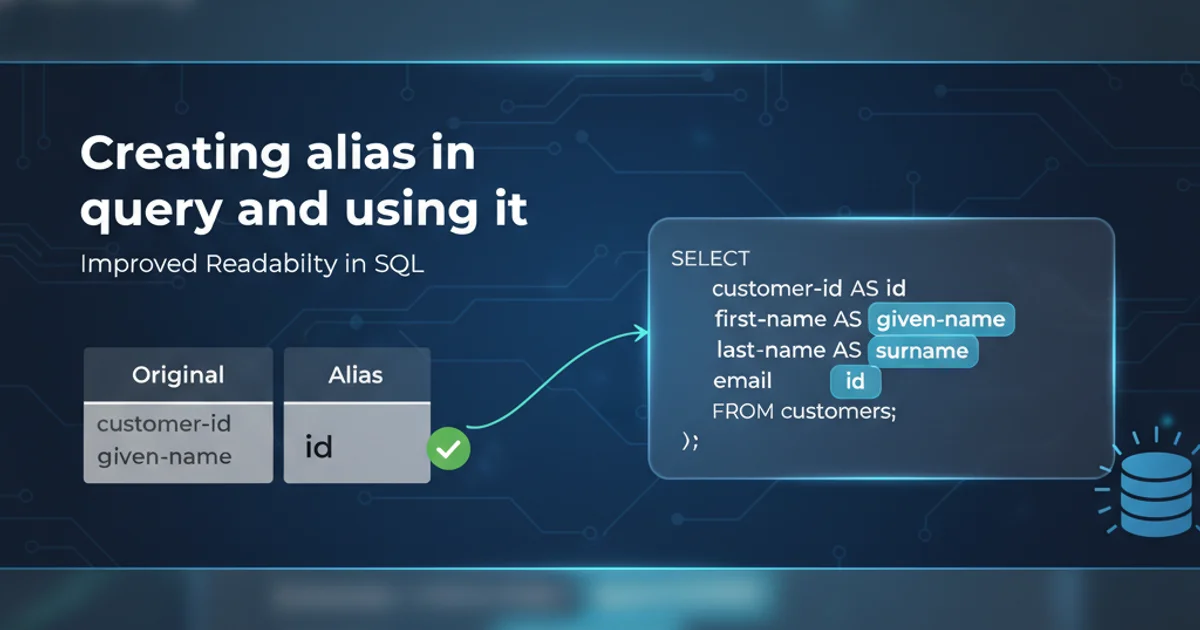Using DialogInterface's onClick() method
Categories:
Mastering DialogInterface's onClick() Method in Android AlertDialogs

Learn how to effectively implement and manage user interactions within Android AlertDialogs using the DialogInterface.OnClickListener interface.
Android's AlertDialog is a crucial UI component for displaying important messages, asking for user confirmation, or presenting choices. A key part of making these dialogs interactive is handling button clicks, which is primarily done through the DialogInterface.OnClickListener interface. This article will guide you through the fundamentals of using onClick() within AlertDialogs, covering common patterns, best practices, and practical examples.
Understanding DialogInterface.OnClickListener
The DialogInterface.OnClickListener is a functional interface in Android that defines a single method: onClick(DialogInterface dialog, int which). This method is invoked when a button within a dialog is pressed. The dialog parameter provides a reference to the dialog itself, allowing you to dismiss it or perform other actions. The which parameter is an integer that identifies which button was clicked. For standard AlertDialog buttons, which will be one of the following constants:
DialogInterface.BUTTON_POSITIVEDialogInterface.BUTTON_NEGATIVEDialogInterface.BUTTON_NEUTRAL
When dealing with lists or custom layouts, which will correspond to the index of the selected item.
flowchart TD
A[User Clicks Button] --> B{AlertDialog Button Clicked}
B --> C{Is OnClickListener Set?}
C -- Yes --> D[Call onClick(dialog, which)]
D --> E{Handle Button Logic}
E --> F[Dismiss Dialog]
C -- No --> G[No Action Taken]
G --> FFlowchart of AlertDialog button click handling
Implementing onClick() for Standard Buttons
The most common use case for onClick() is to respond to clicks on the positive, negative, or neutral buttons of an AlertDialog. You typically pass an instance of DialogInterface.OnClickListener to the setPositiveButton(), setNegativeButton(), or setNeutralButton() methods of the AlertDialog.Builder.
import android.app.AlertDialog;
import android.content.DialogInterface;
import android.os.Bundle;
import android.widget.Toast;
import androidx.appcompat.app.AppCompatActivity;
public class MainActivity extends AppCompatActivity {
@Override
protected void onCreate(Bundle savedInstanceState) {
super.onCreate(savedInstanceState);
setContentView(R.layout.activity_main);
findViewById(R.id.show_dialog_button).setOnClickListener(v -> showConfirmationDialog());
}
private void showConfirmationDialog() {
AlertDialog.Builder builder = new AlertDialog.Builder(this);
builder.setTitle("Delete Item")
.setMessage("Are you sure you want to delete this item?")
.setPositiveButton("Delete", new DialogInterface.OnClickListener() {
public void onClick(DialogInterface dialog, int which) {
// User clicked Delete button
Toast.makeText(MainActivity.this, "Item deleted!", Toast.LENGTH_SHORT).show();
// Perform deletion logic here
dialog.dismiss(); // Dismiss the dialog
}
})
.setNegativeButton("Cancel", new DialogInterface.OnClickListener() {
public void onClick(DialogInterface dialog, int which) {
// User clicked Cancel button
Toast.makeText(MainActivity.this, "Deletion cancelled.", Toast.LENGTH_SHORT).show();
dialog.cancel(); // Dismiss the dialog, same as dialog.dismiss()
}
});
AlertDialog dialog = builder.create();
dialog.show();
}
}
Example of implementing onClick() for positive and negative buttons.
dialog.dismiss() or dialog.cancel() within your onClick() implementation to close the dialog after the user has made a choice. If you don't, the dialog will remain on screen.Handling Multiple Buttons and List Selections
When your AlertDialog has multiple buttons or presents a list of choices (e.g., single-choice or multi-choice lists), the which parameter becomes crucial for identifying the user's selection. For standard buttons, which will be BUTTON_POSITIVE, BUTTON_NEGATIVE, or BUTTON_NEUTRAL. For list items, which will be the zero-based index of the selected item.
import android.app.AlertDialog;
import android.content.DialogInterface;
import android.os.Bundle;
import android.widget.Toast;
import androidx.appcompat.app.AppCompatActivity;
public class MainActivity extends AppCompatActivity {
private String[] colors = {"Red", "Green", "Blue"};
@Override
protected void onCreate(Bundle savedInstanceState) {
super.onCreate(savedInstanceState);
setContentView(R.layout.activity_main);
findViewById(R.id.show_list_dialog_button).setOnClickListener(v -> showListSelectionDialog());
}
private void showListSelectionDialog() {
AlertDialog.Builder builder = new AlertDialog.Builder(this);
builder.setTitle("Choose a Color")
.setItems(colors, new DialogInterface.OnClickListener() {
@Override
public void onClick(DialogInterface dialog, int which) {
// 'which' is the index of the selected item
String selectedColor = colors[which];
Toast.makeText(MainActivity.this, "Selected: " + selectedColor, Toast.LENGTH_SHORT).show();
dialog.dismiss();
}
});
AlertDialog dialog = builder.create();
dialog.show();
}
}
Example of handling item selection in a list dialog.
onClick() method for the list items is typically handled separately from the positive/negative/neutral buttons. The list item onClick() will fire immediately upon selection (for single-choice) or when the positive button is pressed (for multi-choice, after tracking selections).Lambda Expressions for Concise Listeners
With Java 8 and higher, you can use lambda expressions to make your OnClickListener implementations much more concise, especially for simple actions. Since DialogInterface.OnClickListener is a functional interface, it's a perfect candidate for lambdas.
import android.app.AlertDialog;
import android.content.DialogInterface;
import android.os.Bundle;
import android.widget.Toast;
import androidx.appcompat.app.AppCompatActivity;
public class MainActivity extends AppCompatActivity {
@Override
protected void onCreate(Bundle savedInstanceState) {
super.onCreate(savedInstanceState);
setContentView(R.layout.activity_main);
findViewById(R.id.show_lambda_dialog_button).setOnClickListener(v -> showLambdaDialog());
}
private void showLambdaDialog() {
AlertDialog.Builder builder = new AlertDialog.Builder(this);
builder.setTitle("Quick Action")
.setMessage("Perform this action?")
.setPositiveButton("Yes", (dialog, which) -> {
Toast.makeText(this, "Action performed!", Toast.LENGTH_SHORT).show();
dialog.dismiss();
})
.setNegativeButton("No", (dialog, which) -> {
Toast.makeText(this, "Action cancelled.", Toast.LENGTH_SHORT).show();
dialog.cancel();
});
builder.create().show();
}
}
Using lambda expressions for a more concise OnClickListener.
this) is what you expect, particularly in anonymous inner classes or nested scopes.